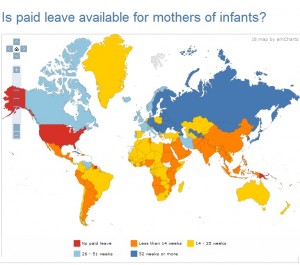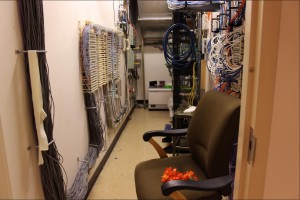Shorter maternity leave in the U.S. gives moms more time to enjoy workplace pump stations

In Washington state, it’s possible to string together 18 weeks of maternity leave by combining six weeks of disability with the 12 weeks off guaranteed by the federal Family and Medical Leave Act.
The family leave is unpaid, and compensation during the disability leave depends on the terms of your workplace’s disability insurance coverage.
I took the full leave after the birth of my sons, but, boy, once my disability and vacation time ran out, it was tough to make ends meet. Makes me pine for progressive countries like …. Russia? The Russian Federation guarantees 78 weeks of paid maternity leave.
According to a study by the International Labour Organization, only three countries don’t offer paid maternity leave, and the United States is one of them. (The other are Oman and Papua New Guinea. The study found no data on Suriname, which is why it shows up red on the interactive map.)
Time away from work is key to establishing breastfeeding, which the World Health Organization recommends mothers do for six months. When moms have to go back to work after four-and-a-half months, at the latest, then they are consigned to expressing milk at work.
Those pumping breaks are protected by the Fair Labor Standards Act, which also requires employers to provide a place (other than a bathroom) for moms to pump.
Former Columbian reporter Isolde Raftery, who recently returned to her job at KUOW in Seattle after the birth of her first child, created a slide show of workplaces “pump stations.”
Here’s what The Columbian’s looks like:
It’s in a lounge outside the women’s restroom. It actually stacks up fairly well. I’d say it beats the spot provided by Raftery’s current employer:



